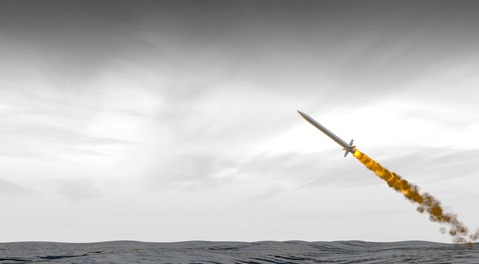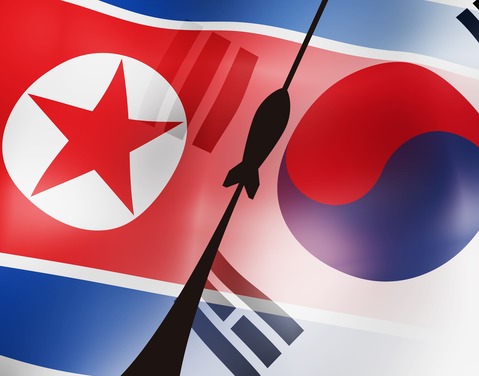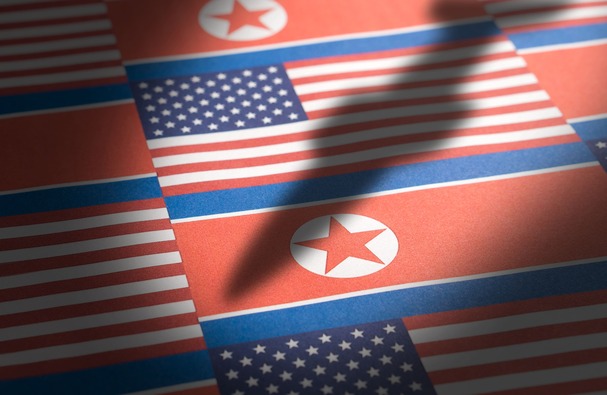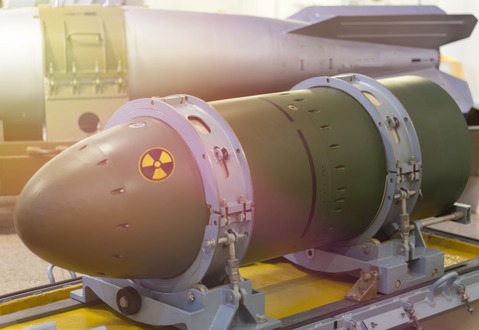- #North Korea
- #Nuclear & Missile Issues
- #Sanctions & Human Rights
- #South Korea
- #US-ROK Alliance

► North Korea’s intensive missile launches in early October are unlike any of its previous missile tests. These launches were not aimed at the technological development of its missile capability. Rather, they were offensive nuclear weapons exercises carried out by North Korea’s tactical nuclear operations command.
► In short, now, South Korea must check its conventional deterrence capabilities and focus on consolidating U.S. extended deterrence. In doing so, South Korea should try to avoid a vicious cycle of confrontation and accumulate the diplomatic assets required to prepare for future negotiations with the North.
North Korea’s intensive missile launches in early October are unlike any of its previous missile tests. These launches were not aimed at the technological development of its missile capability. Rather, they were offensive nuclear weapons exercises carried out by North Korea’s tactical nuclear operations command. Their main targets were South Korea’s command centers and airports, and American military bases in Japan as well as in the region. The exercises came after North Korea had enacted a law allowing its nuclear weapons to be used for offensive purposes. The exercises were personally commanded by the “supreme leader”.
North Korea’s message was clear. It aimed to significantly increase its threat level against South Korea and showcased its capability to target South Korea, the United States, and Japan simultaneously. In doing so, it was holding in check American and Japanese support of South Korea during a potential military conflict scenario. In essence, North Korea is using its nuclear threat to hedge against South Korea, the U.S., and Japan.
North Korea’s recent actions—refusing dialogue and increasing provocations—have come in the aftermath of the breakdown of the US-North Korean summit meeting in Hanoi. Additional North Korean provocations, including a possible seventh nuclear test, seem likely sooner rather than later.
Amidst North Korea’s growing threat, there has been plenty of public discussions in South Korea surrounding its options to deal with the North Korean tactical nuclear threat. Unfortunately, these discussions have involved unrealistic options and have only added to the confusion and diversion in public opinion. To control the diverging public discussion and draw the best practical option, we must check the state of the current discussion on the proposed options.
Basically, the first step in responding to North Korea’s nuclear threat should be to strengthen deterrence capabilities. The next step would be to explore broader diplomatic avenues. Since these two steps can be mutually contradictory in operation, we must handle them skillfully and make sure to maintain a delicate balance between them. For obvious reasons, more emphasis should be given to strengthening deterrence now.
As such, South Korea must first improve its own deterrence capabilities, including Kill Chain, Korean missile defense, and second-strike capabilities. ROK-US joint military capabilities should also be enhanced. But deterring a nuclear threat requires more than conventional capabilities. We need nuclear deterrence.
This does not imply that South Korea should consider developing its own nuclear weapons. South Korea’s going nuclear will result in an end to efforts to achieve denuclearization of North Korea and will trigger a nuclear domino in East Asia. South Korea will face sanctions not only from the surrounding powers but also from the international community. For a country like South Korea that relies heavily on trade, enduring the effect of economic sanctions would be a huge challenge. Countering the effects of economic sanctions would require domestic/public solidarity. However, it is difficult to expect such solidarity given the deep split in public opinion as well as in political circles over North Korea-related issues.
The next option would be to re-station U.S. tactical nuclear weapons in South Korea. This option also comes with many problems. Most importantly, the United States has ruled out such an option. Since the withdrawal of its tactical nuclear weapons from the region, the U.S. has maintained a policy that it will not re-station them in the region. The United States insists that it can quickly deploy tactical nuclear weapons, whenever the need arises.
Moreover, the re-introduction of tactical nuclear weapons on South Korean soil will negatively influence the efforts toward North Korean denuclearization. It will go against any pledge to denuclearize the Korean Peninsula. So far, even though North Korea has violated the commitment to a nuclear-free Korean Peninsula, South Korea has maintained its commitment and urged North Korea to do the same from the moral high ground. That approach would have to be revised.
The true challenge will come from China and Russia. Specifically, the two countries will strongly condemn the presence of U.S. tactical nuclear weapons in South Korea, arguing that these weapons are aimed at them, not North Korea. This will lead to greater conflict than the one we witnessed during the THAAD controversy. Hence, cooperation with China and Russia in denuclearizing North Korea will become even more difficult.
Not until Russia uses tactical nuclear weapons against Ukraine and the U.S. make a dramatic U-turn in its tactical nuclear weapons policy in Asia, the option to re-station American tactical nuclear weapons in South Korea remain unrealistic.
The next option would be to “constantly” deploy American strategic assets around the Korean Peninsula. However, this option is also unrealistic. The United States has limited strategic assets in its arsenal. The United States dispatches them all over the world according to needs. Constantly deploying part of its limited strategic arsenal to the Korean Peninsula will challenge its management and operation of them. Also, China and Russia will see this as targeting them and take military responses. This will lead to unnecessary tension between US and China and between US and Russia. For these reasons, constant deployment of U.S. strategic assets to South Korea is not a practical option.
Given the firm opposition of the United States regarding Korea’s nuclear armament, the stationing of American tactical nuclear weapons in South Korea, and the constant deployment of U.S. strategic assets around the Korean Peninsula, further insistence on these options will hurt the bilateral relations between South Korea and the United States and will only benefit the North, whose goal is to use nuclear weapons to drive a wedge between the allies.
The only remaining practical option is to strengthen U.S. extended deterrence. Whether tactical nuclear weapons are in South Korea, in the United States, or on the U.S. strategic assets, the ultimate decision will lie in the hands of the United States. Therefore, making sure that the U.S. takes the timely and sufficient decision to extend its nuclear umbrella to South Korea in this crucial moment will be the key issue.
In this sense, the fact that the two countries have resumed discussing extended deterrence is a welcome development. But the discussions must go beyond reconfirming their principal commitments and come up with a specific plan on how the United States’ nuclear umbrella will operate in a prompt and sufficient manner. Such a plan must be considered in joint military operations and exercises so that the promise of a nuclear umbrella is further guaranteed as a surefire. This will send a strong message of deterrence to North Korea. Only then will we be able to discourage any discussions about South Korea’s development of nuclear weapons or the re-stationing of tactical nuclear weapons on the Korean Peninsula.
However, traditionally, United States officials have not been so enthusiastic about discussing the operation of its nuclear weapons with its South Korean counterpart. To overcome bureaucratic inertia, intervention from higher leadership is mandatory. As such, meaningful discussions on extended deterrence will be made possible when the top leaders order such discussions to move forward.
If the U.S. remains reluctant to engage in serious discussions about strengthening extended deterrence, South Korea can work together with other regional actors who share an interest in extended deterrence and request the U.S. to engage in such discussions in a multilateral format. This would be a similar approach to the Nuclear Planning Group in NATO.
In addition to strengthening extended deterrence, South Korea must not forget to explore diplomatic avenues. Even though this may sound mutually contradictory, this is a subject where genuine statecraft and diplomatic eminence are tested. This does not necessarily imply that South Korea should try to engage in dialogue immediately. North Korea will reject such a hasty approach and a rejection will only worsen public sentiments. One subject to look out for at this juncture is the call for US-DPRK negotiations over nuclear arms reduction. The argument is that we should accept the realities of North Korea’s nuclear weapons program and manage the situation by engaging in negotiations over nuclear arms reduction. South Korea should not accept such a proposal.
Instead, South Korea should leave open the possibility of future negotiations while responding to North Korea in a disciplined and prudent manner and working with neighbors to foster an environment conducive to negotiations. In this vein, while South Korea makes efforts to strengthen deterrence, it should make sure that the two Koreas do not fall into a vicious cycle of confrontation based on mutual confirmation biases. Moreover, it must make sure that strengthening ROK-US-Japan cooperation in dealing with the North Korean nuclear threat does not lead to greater conflict with China and Russia.
Inevitably, South Korea is already tilting towards the United States amidst the intensifying US-China competition and the US-Russia conflict in the aftermath of the Ukraine War. South Korea must manage its relations with China and Russia from a rather moderate stance and, by doing so, make sure that the two countries maintain their willingness to work with South Korea in ushering in a nuclear-free Korean Peninsula, which also serves the interests of China and Russia.
In short, now, South Korea must check its conventional deterrence capabilities and focus on consolidating U.S. extended deterrence. In doing so, South Korea should try to avoid a vicious cycle of confrontation and accumulate the diplomatic assets required to prepare for future negotiations with the North. South Korea must steer domestic discussions in this direction and not waste time and energy on unrealistic options.






